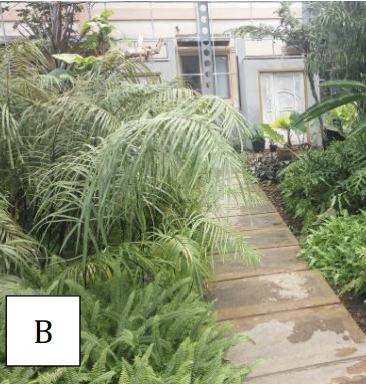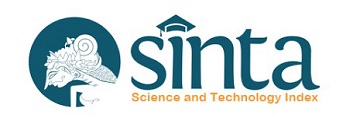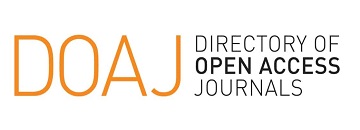Study of drugs potential of fern collections at Purwodadi Botanic Gardens

Downloads
Downloads
Abotsi, K.E., Radji, R.A., Rouhan, G., Dubuisson, J-Y., & Kokou, K. (2015). The pteridaceae family diversity in Togo. Biodivers Data J, 3(3), 1-63.
Ahmad, F.B., & Ismail, G. (2003). Medicinal plants used by Kadazandusun communities around Crocker Range. ASEAN Review of Biodiversity and EnvironmentalConservation(ARBEC), 1(1), 1-10.
Barwa, N.S. (2004). Cara pemanenan liar yang baik. Seminar Tumbuhan Obat, Kosmetika, dan Aromatik. Bogor: Puslit Biologi, LIPI.
Baskaran, X-R., Vigila, A-V.G., Zhang, S-Z., Feng, S-X., & Liao, W-B. (2018). A review of the use of pteridophytes for treating human ailments. J Zhejiang Univ Sci B, 19(2), 85-119.
Benniamin, A. (2011). Medicinal ferns of North EasternIndia with special reference to Arunachal Padresh. Indian Journal of Traditional Knowledge, 10(3), 516-522.
Bourdy, G., Francois, C., Andary, C., & Boucard, M. (1996). Maternity and medicinal plants in VanuatuII: Pharmacological screening of five selected species. Journal of Ethnopharmacology, 52(3), 139-143.
Cambie, R.C., & Ash, J. (1994). Fijian Medicinal Plants. Australia: CSIRO.
Chang, H.C., Gupta, S.K., & Tasay, H.S. (2011). Studies on folk medicinal fern: an example of “Gu Sui-Bu”. In: Fernandez H, Kumar A, Revilla MA (Eds.), Working with Ferns, Issues and Applications. Springer New York Dordrecht Heidelberg, London, p.285-304.
Chen, I-N., Chang, C-C., Wang, C-Y.,Shyu, Y-T., & Chang, T-L. (2008). Antioxidant and antimicrobial activity of Zingiberaceae plants in Taiwan. Plant Foods Hum Nutr. 63(1), 15-20.
Chinaka, I.C.B., Okwudili, O.S., & Nkiru, D-A.I. (2018). Chemical composition,antioxidant and antibacterial properties of chloroform fraction of Platyceriumbifurcatum. ARLS. 2(1), 1-6.
Christenhusz, M.J.M., Zhang, X.C., & Schneider, H. (2011). A linear sequence of extant families and genera of lycophytes and ferns. Phytotaxa, 19, 7-54.
Dayanti, R. (2012). Aktivitas antioksidan ekstrak metanol bagian batang tumbuhan paku Nephrolepis radicans(Burm.) Kuhn. UNESA Journal of Chemistry.1(1), 86-92.
De Winter, W.P., & Amoroso, V.B. (Editors), 2003. Plant Resourcesof South East Asia No. 15(2). Cryptogams: Fern and fern allies. Prosea Foundation, Bogor. Indonesia. 268 pp.
Dhiman,A.K. (1998). Ethnomedicinal uses of some pteridophyitc species in India.IndianFern Journal,15(1-2), 61–64.
Flora Malesiana. (2020). Portal cybertaxonomy Flora Malesiana: Polypodiaceae. Diambil tanggal 19 Januari 2021.
Govindappa, M., Sravya,S.N., Poojashri, M.N.,Sadananda, T.S., & Chandrappa, C.P.(2011). Antimicrobial, antioxidant and in vitro anti-inflammatory activity of ethanol extract and active phytochemical screening of Wedelia trilobata(L.) Hitchc. J Pharmacognosyand Phytotherapy. 3(1), 1-5.
Hidayat, S. (2012). Keberadaan dan pemanfaatan tumbuhan obat langka di wilayah Bogor dan sekitarnya. Media Konservasi. 17(1), 33-38.
Ibrahim, F.H., & Hamzah, N. (1999). The use of medicinal plant species by the Temuan Tribe of Ayer Hitam Forest, Selangor, Peninsular Malaysia. Pertanika J. Trop. Agric. Sci. 22(2), 85-94.
IUCN.(2020). The IUCN Red List of Threatened Species. Diambil tanggal 06 Mei 2020 darihttps://www.iucnredlist.org.
Joshi, B., Tewari, S., Srivastava, A., & Mishra, R.K. (2019). Ecology and ethnobotany of Ceratopteris thalictroides (L.) Brongn. In Horticulture and Ecology-studies & Management. New Delhi: Discovery Publishing House Pvt. Ltd.
Keller, H.A., & Prance, G.T.(2015). The ethnobotany of fernsand lycophytes. Fern Gaz. 20(1), 1-13.
Komala, I., Azrifitria, Yardi,Betha, O.Z., Muliati, F., & Ni'mah, M. (2015). Antioxidant and anti-inflammatory activity of the Indonesian ferns, Nephrolepis falcataand Pyrrosia lanceolata. International Journal of Pharmacy and Pharmaceutical Sciences, 7(12), 162-165.
Kuncoro, H., Farabi, K., Julaeha, E., Rijai, L., & Supratman, U. (2015). Stigmast-5(6)-en-3β-ol dari Herba Tumbuhan Krokot (Lygodium microphyllum). Jurnal KimiaValensi. 1(1), 50-54.
Kuncoro, H., Farabi, K., Rijai, L., Julaeha, E., Supratman, U., & Shiono, Y. (2018). Flavonoid Compounds from the Herb of Krokot (Lygodium microphyllum) and their antioxidant activity against DPPH. J. Math. Fund. Sci. 50(2), 192-202.
Lesmana, H., Alfianur, Utami, P.A., Retnowati, Y., & Darni. (2018). Pengobatan tradisional padamasyarakat Tidung Kota Tarakan: studi kualitatif kearifan lokal bidang kesehatan. MEDISAINS. 16(1), 31-41.
Lestarini, W., Matrani, Sulasmi, Trimanto, Fauziah, & Fiqa, A.P.(2013). An alphabetical list of plant species cultivated in Purwodadi Botanic Garden. Purwodadi: Purwodadi Botanic Garden.
Liang, Y.C., Huang, Y.T., Tsai, S.H., Lin-Shiau, S.Y., Chen, C.F., & Lin, J.K. (1999). Suppression of inducible cyclo oxygenase and inducible nitric oxide synthase by apigeninand related flavonoid in mouse macrophages.Carcinogenesis.20(10), 1945-52.
Liu, Y., Wujisguleng, W., &Long, C. (2012). Food uses of ferns in China: a review. Acta Sos Bot Pol. 81(4), 263-270.
Margono, D.P.N.H., Suhartono, E., & Arwati, H. (2016). Potensi ekstrak kelakai (Stenochlaena palustris(Burm.f) Bedd) terhadapkadar tumor necrosis factor-alfa (TNF-α) pada mencit BALB/c yang diinfeksi Plasmodium bergheiANKA. Berkala Kedokteran. 12(1), 77-85.
Minarchenko, V., Tymchenko, I., Dvirna, T., & Makhynia, L. (2017). A review of the medicinal fernsof Ukraine. Scripta Scientifica Pharmaceutica. 4(1), 46-42.
Modolo, L.V., & Foglio, M.A. (2020). Brazilian Medicinal Plants. USA: CRC Press.
Newman, D.J., Cragg, G.M., & Snader, K.M. (2000). The influence of natural products upon drug discovery.Nat. Prod.Rep.17(3), 15-34.
Noor, F.A., & Jahan, S. (2017). Note on the Use of Stenochlaena palustris(Burm.f.) Bedd. (Blechnaceae) by a Chakma tribal healer of Khagrachari district, Bangladesh to treat testicular atrophy. Ethnopharmacological Note, 1(1), 13-14.
Nugraha, A.S., Haritakun, R., & Keller, P.A. (2013). Constituents of the Indonesian epiphytic medicinal plant Drynaria rigidula. Natural Product Communications, 8(6), 703-705.
Nurchayati, N. (2016). Identifikasi profil karakteristik morfologi spora dan prothalium tumbuhan paku familia Polypodiaceae. Bioedukasi, 14(2), 25-30.
Ozturk, M., & Hakeem, K.R.(2018). Plant and Human Health, Volume 1. Springer, Switzerland.
Ponnusamy, Y., Chear, N.J.Y., Ramanathan, S., Murugaiyah, V., & Lai, C-S. (2013). Antioxidant and antibacterial properties of Malaysian ferns used traditionallyagainst infection. J. Nat. Prod. Plant Resour, 3(6), 14-18.
Pteridophyte Phylogeny Group I. (2016). A community-derived classification for extant lycophytes and ferns. Journal of Systematics and Evolution. 54(6), 563-603.
Pullaiah, T., Krishnamurthy, K.V., & Bahadur, B. (2017). Ethnobotany of India, Volume 3. New York: Apple Academic Press, USA.
Quattrocchi, U.F.L.S. (2012). CRC World Dictionary of Medicinal and Poisonous Plants: Common Names, Scientific Names, Eponyms, Synonyms, and Etymology. USA: CRC Press.
Setyawan, A.D. (2009). Traditionally utilization of Selaginella; field research and literature review. Nusantara Bioscience, 1(3), 146-158.
Shaikh, S.D., Masal, V.P., & Shaikh, A.S. (2014). Ethnomedical uses of some pteridophytes from Konkan region of Maharashtra, India. Int J Pharm Chem Sci, 3(1), 62-65.
Shil, S., & Choudhury, M.D. (2009). Ethnomedicinal importance of Pteridophytes used by Reang tribe of Tripura, North East India. Ethnobotanical Leaflets, 13, 634-643.
Singh, S.K., & Rajkumar, S.D. (2017). Biodiversity and indigenous use of medicinal fernsin Chandraprabha Wildlife Sanctuary, Chandauli, Uttar Pradesh. International Journal of Research Studies in Biosciences, 5(11), 19-25.
Singh, S., & Singh, R. (2012). Ethnomedicinal use of Pteridophytes in reproductive health of tribal women of Pachmarhi Biosphere Reserve, Madhya Pradesh, India. Int J Pharm Sci Res, 3(12),4780-4790.
Supardi, S., & Susyanty, L. (2010). Penggunaan obat tradisional dalam upaya pengobatan sendiri di Indonesia(analisis data SUSENAS tahun 2007). Jurnal Pusat Penelitian dan Pengambangan Sistem dan Kebijakan Kesehatan. 38(2), 69-73.
Wahyuningsih, D., Murniningtyas, E., & Effendy, S.S. (2016). Indonesian Biodiversity Strategy and Action Plan 2015-2020. Bogor: Bappenas.
Wu, M-J., Weng, C-Y., Wang, L., & Lian, T-W. (2005). Immunomodulatorymechanism of the aqueous extract of sword brake fern (Pteris ensiformis Burm.). J Ethnopharmacol, 98(1-2), 73-81.
Yatskievych, G. (2018). Pteridaceae. Diambil tanggal 06 Mei 2020. www.britannica.com.








